Our Guide To The Best Studio Monitors: Finding Accurate Monitors
Studio monitors are one of the most essential pieces of gear for your studio. They provide an accurate sound as close to what your recording should sound like as possible.
While it’s true that you can start making music without any additional equipment, switching from normal computer speakers, to full-on studio monitors makes a big difference!
You’ll be able to mix music that sounds much more consistent on other sound systems.
If you’re making the switch from consumer-level speakers to studio monitors, be prepared for a world of difference!
In this article, I have hand-picked my top 10 choices for the best studio monitors.
Let me know which ones are your favorite in the comment section below!
Difference between Studio Monitors and Speakers
Short answer: Studio monitors produce a more accurate (flat) sound.

Studio monitors are speakers that are designed in detail for the sole purpose to have least amount of distortion and a flat output. Their main use is to deliver accurate playback in a recording studio.
Standard consumer speakers are meant to amplify a sound as loud as possible. They are tweaked to produce a more artificial sound, commonly with a boosted low frequency.
Do Studio Monitors make a difference?
Short answer: Yes. Unless you are purchasing studio monitors for average listening instead of sound/music production.
Like I have mentioned earlier, studio monitors provide a flat & accurate sound while consumer speakers provide an altered “louder” sound.
The biggest difference you’ll notice with a decent pair of studio monitors is that you aren’t being lied to. You will be able to hear the lows, mids, and highs as they are meant to be heard.
It’s common to think your track has a ton of bass, only to listen to it on another set of speakers to discover the bass is not nearly as present.
Are Studio Monitors good for listening to music?
Short answer: Yes! If your purpose of buying studio monitors is to hear tracks as they were intended to be heard than they are the way to go. Just don’t expect a huge amount of bass.
They are great for not only producing top-quality sounds in a studio environment but also for everyday listening.
On the other hand, not all studio monitors are excellent for loud listening and will most likely produce subpar results compared to home theater systems.
Studio monitors are definitely not what you’d want to use for parties and events. Even if it’s a small party.
These speakers usually have a lacking bass frequency as well. Many producers also purchase a studio subwoofer to improve the low frequencies.
You’ll find plenty of audiophiles that use studio monitors to listen to their vinyl records and high quality audio files. The reason being is so they can hear music the way recording engineers and artists intended it to be heard.
Browsing through Amazon reviews of studio monitors, you’ll notice a lot of casual listeners talking about how when they started listening to their music using studio monitors, they heard instruments that weren’t audible before-hand.
Do I need Studio Monitors to get into music production?
Short answer: Not at all. However, if you can afford it, go for it!

You don’t need monitors to start creating music.
However, if you can afford to shell out about $300, they are a great investment that will allow you to really perfect your mixes.
Why $300 you ask? Simply, I have found that pairs of studio monitors that cost under $300 ($150 per monitor) sound hardly any better than regular computer speakers.
I’ve found that a lot of companies market $50 speakers as “studio monitors” when they are really just plain-old computer speakers in a larger box.
Listening to an accurate representation of your mix allows you to make a more educated guess to how your track will sound on other speakers.
Tip: Keep in mind that even producers with the most expensive studio monitors reference there tracks on many different consumer headphones and speakers before releasing their tracks.
It’s a good habit to listen to your music on different headphones and speakers you have lying around the house before sharing your tracks. Even test it out on your car speakers!
Do you need an audio interface for monitors?
Short answer: Yes. A PC/Mac’s sound card only outputs consumer-level audio.

Using an audio interface along with your studio monitor is an ideal choice if you want to get the best quality sound possible.
However you can also utilize your built-in sound card for the time being if you’re really on a budget.
The major difference between a built-in consumer sound card and a professional audio interface is the sound value of the Digital to Analogue Converter or DAC. The better the quality of the DAC, the cleaner and smoother the generated audio will be.
Professional audio interfaces use pro-level line outputs that increase the signal to noise ratio and deliver much cleaner sound.
Some also use the balanced outputs that use wiring to reduce the noise on the audio cables.
If you are recording while listening to music, you will require a precise level of latency otherwise the material you are recording might lag behind what you are listening to due to the delay.
The best audio interfaces reduce the latency between the monitor and the speaker and pass the sound around more efficiently.
Also, if you plan on connecting MIDI devices to your computer (without a MIDI-to-USB converter) and even plan on plugging in your guitar, an audio interface will make that possible.
Furthermore, audio interfaces produce a cleaner sound and also work at higher sampling rates and bit depths than the average consumer sound cards and are needed to connect instruments.
Do studio monitors need to be broken in?
Short answer: Yes. They will take a bit to break in and loosen up.
Studio monitors need a break-in period to adjust to fully adjust. A break-in period is the time needed to condition a new system by giving it an initial running.
When new out of the box, the studio monitors have a higher stiffness than they do after some time of use.
The system is not fully capable of reproducing low notes perfectly until the surrounds have loosened up a little.
Also, keep in mind that monitors are more easily damaged when they are new and driven to their maximum limit. Be careful. (of course if you’re buying used monitors, this is not an issue.)
What size studio monitors do I need?
Short answer: 5-inch woofer with a 1-inch tweeter. If you can buy bigger speakers, then go for it! Just don’t go for monitors with a bigger woofer that are available for a lower price than the smaller-woofer monitors. That’s usually a big red flag.

The size of the studio monitor you want to use for your recordings depend on the size of your environment and the level of usage.
If you are producing your mixes in a small space, you will get more precise and better results with smaller studio monitors.
However, if you are working in a large recording studio then you require appropriate monitors to balance your audio.
A monitor with a 5-inch woofer and a 1-inch tweeter is perfect for most beginner bedroom producers.
The Best Studio Monitors: Our Choices
KRK RP5G2
Estimated Price: $199.99

The KRK RP5G2, manufactured by Rokit is a highly respected, economical and accurate studio monitor.
Whenever you’re creating your very own home studio, investing in an accurate pair of monitors becomes a priority.
People are generally looking for ergonomic, economic and user-friendly studio monitors that won’t cause much hassle for them.
Rokit has developed this studio monitor with all this in mind. The RP5G2 is a self-powered studio monitor which means that you won’t have to go through the hassle of matching power amps to the monitor (it’s all built in).
In addition, the monitor comes with easy-to-use frequency controls which can customize the monitor to any room or setting.
The monitor has been ergonomically designed and can easily detect & fix common monitor placement issues like, for example, bad acoustics.
Coming to the technical side of things, you’ll notice that the classic glass aramid woofer is still there but inside it has been remodeled for a more neutral performance.
KRK has redesigned and improved its previous models and incorporated the results in the RP5 G2 making high-end diffusion more directional and cutting down many phase problems.
As a result you’ll witness clearer impressions of wrecked instruments like guitars and cymbals.
Yamaha HS5
Estimated Price: $199.99
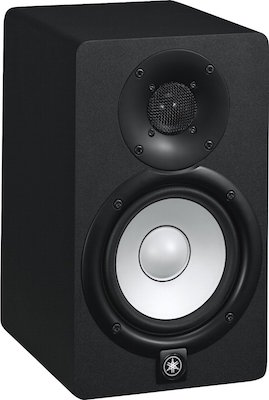
Yamaha is a giant and a veteran when it comes to Audio Equipment.
The HS5 is part of Yamaha’s latest active studio monitors which will ensure better-sounding recordings.
Since the 70s, Yamaha has been perfecting its monitors and in 2015, it has released the bi-amplified driven, highly accurate HS5 which has raised the bar for every audio company.
The HS5 features high-performance drivers which are complimented by a sophisticated mounting system.
The beefy magnets and advanced magnetic technology ensure a uniform, sharp and robust flux field which is essential over a wide frequency range like in concerts.
In addition, the HS5 can deliver in any room and will never disappoint you on the road. It packs Room Control on Trim Response Controls which will personally let you customize the monitor according to your needs.
Presonus Eris E5
Estimated Price: $120
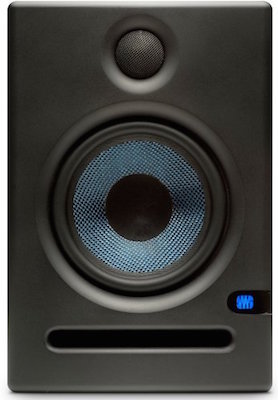
Presonus is a well-established industry player when it comes to studio equipment.
In recent years, they’ve added Studio Monitors to their list of specialties and have left a heavy mark with their top-of-the-line monitors like the Presonus Eris E5.
The E5 may be the smallest of all speakers that Presonus has produced but it is definitely a catch for the price tag.
The E5 is a fully customizable solution for your playback needs and delivers highly accurate sounds with a tight bass & clean upper ends.
No matter which music genre you belong to, the E5 will provide you ample amount of controls to play with until you’re satisfied.
The controls, when used in conjunction, will allow you to produce an accurate linear response and simulate various environments.
You will benefit greatly from this as you’ll have a better outlook at how your music sounds in different environments which means you can adjust it beforehand.
Presonus is also very serious when it comes to your safety and meets all the environmental standards like RF shielding, temperature control, soft start u
Yamaha HS8
Estimated Price: $339.90
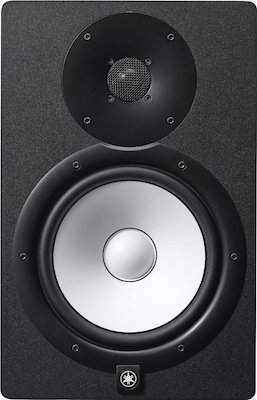
A 2-way bass-reflexed studio monitor, the HS8 may carry a slightly heavy price tag but it truly delivers premium quality sound with absolute transparency.
The audio performance is heavily supported by a carefully designed mounting system.
The woofer gives accurate, low-end response due to the extraordinary performance of the magnet while the extra thick tweeter frame ensures cancellations of most interferences.
The HS8 is a bi-amplified speaker set which means you won’t be needing separate amplifiers for it.
The power & speakers are in fact integrated into one unit that delivers consistent, superior performance in almost every listening environment.
One particular feature of the HS8 is extra-large magnets. These magnets work in conjunction with the sophisticated circuitry to give you a uniform, tightly controlled flux field that will give you extremely soothing response. The magnets are similar to the HS5 but are bigger and integrated at a higher level.
Lastly, the HS8 is extremely portable and you can take it just about anywhere as long as it’s used with a good enough audio workstation that can handle its raw power.
The controls will allow you to adjust it for almost any surrounding and you can get started right on the road, without wasting any time.
Mackie CR4
Estimated Price: $149.99
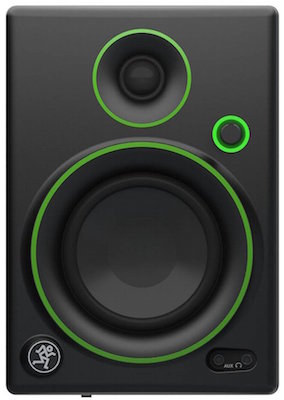
Part of Mackie’s CR series, the CR4 is a portable and reliable studio monitor that provides high quality audio playback in home & studio environments.
The pair comes with a passive speaker and with an amplifier powered speaker, either of which can be set as the left or the right speaker.
The CR4 hosts a 1/8’’ stereo input that is perfect for connecting mp3 players or even an iPad (if you are a tablet producer) to your studio monitors.
In addition, a ¼’’ rear input allows you to connect the more traditional audio sources.
All in all, the CR4 is a premium quality studio monitor which will keep its word in terms of delivering but at the same time won’t break the bank.
It’s ideal for all your needs, including home studio, multimedia creation, broadcast and post-production.
KRK RP8G3
Estimated Price: $249.50
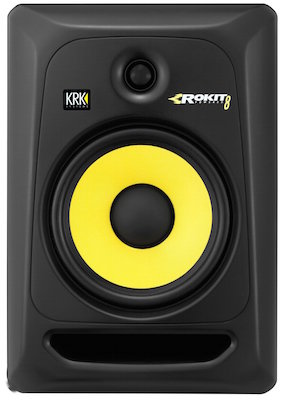
Previously, we talked about how the RP5 monitors produced an excellent. If you want even more quality for your home studio, check out the KRK RP8G3.
The RP8G3 is the largest, most powerful model in the entire Rokit series. It is a 2-way powered speaker that flawlessly pushes 100 watts out of an 8-inch woofer at an extremely impressive max SPL of 109dB.
The RP8G3 is highly customizable like its predecessors and offers separate high & low frequency adjustments which will allow you to cruise through +/-2dB of padding.
This will serve pretty handy when you’re thinking of making fine-tune adjustments.
The I/O system is pretty straightforward, making it easy to use. The rear houses a ¼ inch balanced TRS input, a balanced XLR input, as well as unbalanced RCA input.
The 8-inch woofer is made out of Aramid glass composite handling 75 watts while the remaining 25 watts are taken in by the 1-inch soft dome woofer.
JBL LSR308
Estimated Price: $249
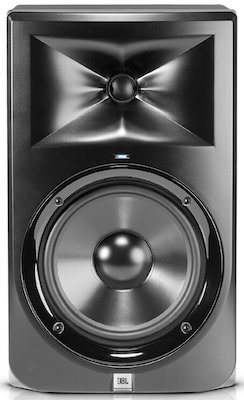
Belonging to the same range as the 305, the LSR308 is another outstanding piece of engineering from JBL and comes at an extremely sweet price.
The studio monitor delivers extremely rich lows yet creamy smooth highs which makes it hard for any music producer to ignore it.
The LSR308 also comes with stereo imaging which it inherits from JBL’s flagship monitor.
This gives it incredible sound like the 305. In addition, it also features a ported design which is incredible for music producers looking to reduce turbulence from their recordings.
JBL also makes your job easier by providing you with a wide sweet spot that can reduce variation in your sounds when you haven’t customized the monitor in the best possible manner.
The LSR308 handles any room smoothly by providing you consistent sound throughout the room without any uneven marks.
Mackie MR mk3
Estimated Price: $249.99
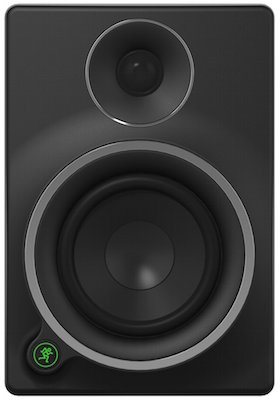
“Music is all that matters.”
This is the tagline behind which the Mackie MR mk3 has been designed.
Mackie MR mk3 studio monitors have been designed from start to finish in a flawless manner so that they deliver sound of the highest quality to your ears.
The MR mk3 has a number of optimizing features like enhanced waveguide for a wider sweet spot, custom-tuned rear porting and extended bass response.
Moreover, like most studio monitors, the MR mk3 also offers extensive customizability and complete control over your acoustics.
You can easily feed more bass in the system by pumping up the low end by 4dB.
The MR mk3 will truly give you control over your productions and without any hassle you’ll be able reveal the true character of your recordings. And that is what you deserve.
M-Audio BX8 D2
Estimated Price: $499.99
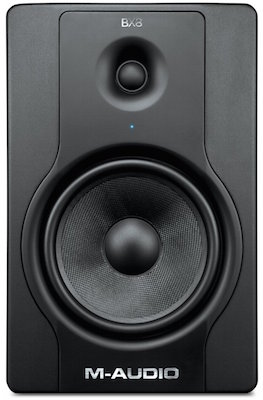
Trusted by more musicians & recording professionals than any other studio monitor, the M-Audio BX8 D2 is an elegant studio masterpiece that continues to bag awards and praises for its enduring quality.
It doesn’t matter whether you’re recording, mastering or mixing, a studio monitor is an essential requirement.
But you don’t want just any studio monitor.
Accuracy is paramount when buying one. The BX8 D2 is extremely accurate and delivers everything you’ve mixed/recorded without leaving a single trace behind.
The monitor comes loaded with the latest-generation Kevlar drivers as well as waveguides that ensure rich, defined sounds that will truly serve as music to your ears!
The BX8 D2 is not just built for the advanced user but also for the hobbyist who has a passion for music.
A wide variety of customizations will give you ample chance of playing with the technicality of your recordings, easing your transition from a beginner to an intermediate.
In addition, the BX8 D2 has a Class A/B bi-amplified design that reserves separate power amps to high/low frequencies.
This will give adequate headroom to even the most dynamic of mixes and give you pin-point surgical precision.
JBL LSR305
Estimated Price: $254.00
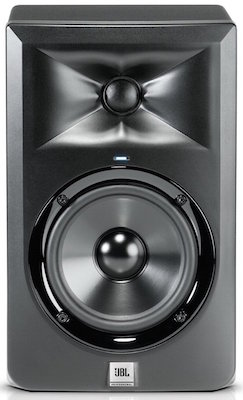
The JBL LSR305 is a perfect solution for any audio engineer or music producer looking for a reliable, multi-purpose studio monitor.
The LSR305 is excellent for mixing music, editing videos or virtually any other task that requires accurate, delicate sound manipulation.
The studio monitor has been designed with sophisticated features which have been passed on from JBL’s flagship M2 Monitor and has earned the acclaimed of several audio engineers like Frank Fillipeti.
One such critically acclaimed feature of the LSR305 is its image control waveguide which helps it preserve sound to its original quality.
In simple words, you will not only be able to hear everything clearly but will also be able to make sonic judgments on the go.
Most audio producers check their mix at low volumes to get a better idea of their overall balances, but many monitors out there don’t support this as their bass isn’t powerful enough at low levels.
You won’t face this problem with the LSR305 which uses Slip Stream low-frequency port for handling such issues.
Enjoy learning about the best studio monitors?
Those were the top 10 choices for the best studio monitors.
Let me know which pair of monitors were your favorite in the comment section below!
Setting up a home studio? Don’t buy unconfidently! Sign up down below and receive our Home Studio Buyer’s Guide for free!
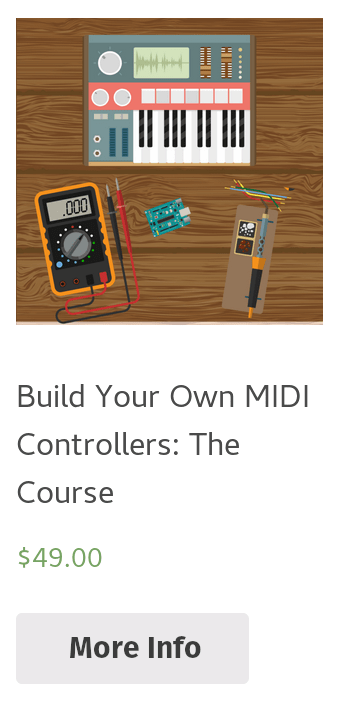
Leave a Comment